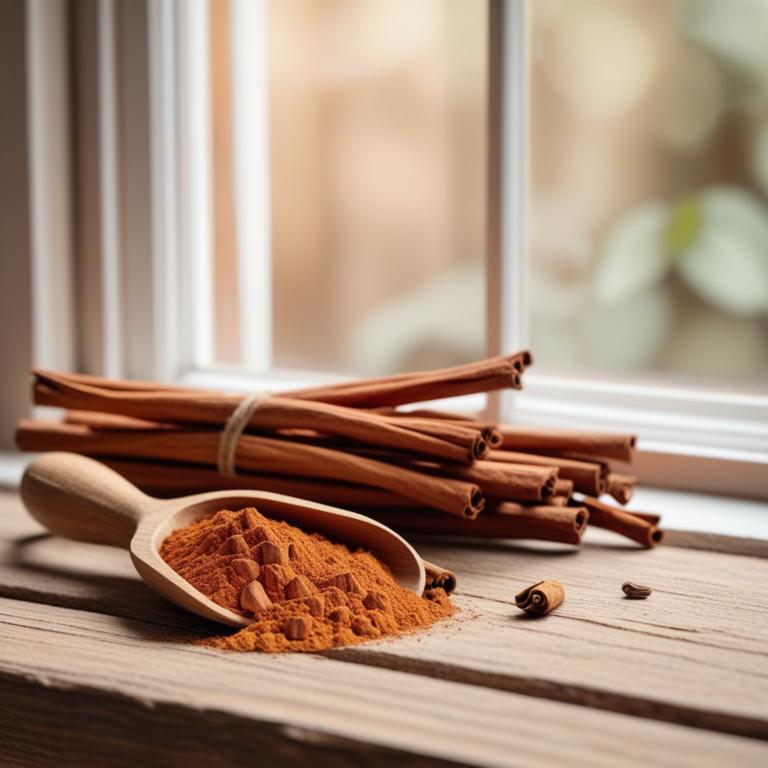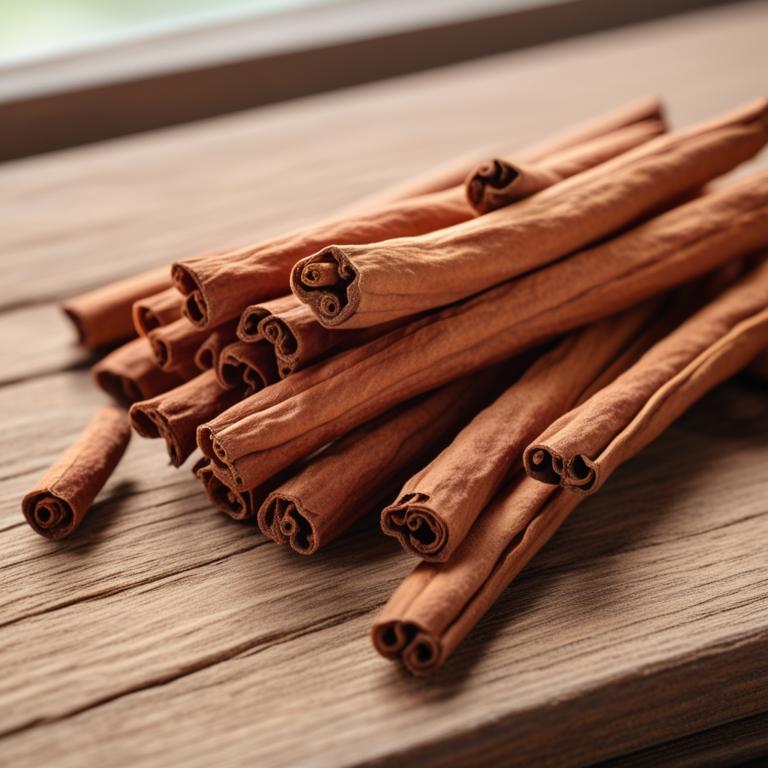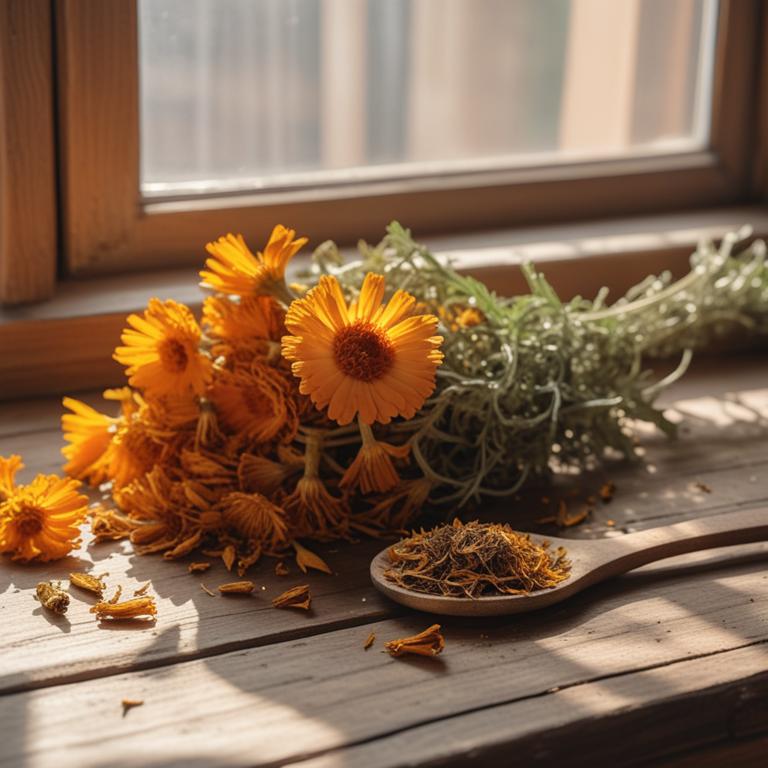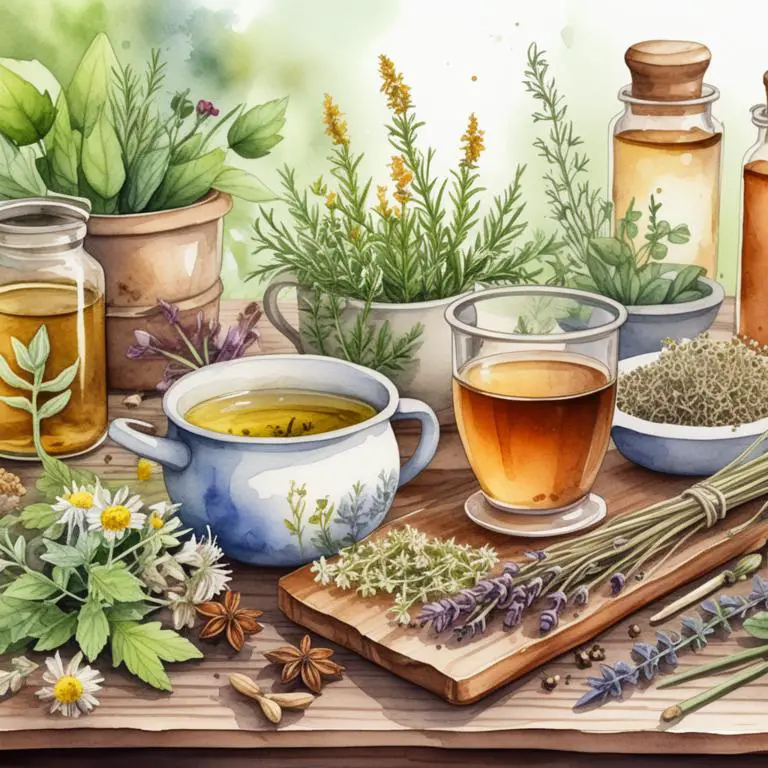Updated: Nov 30, 2024
7 Herbal Tinctures For Stomach Cramps

Herbal tinctures can be a great help when you're dealing with stomach cramps.
These cramps can be caused by a variety of things, like digestive issues or stress. Herbal teas can relieve stomach cramps because they have natural ingredients that can calm the muscles in your stomach and reduce inflammation. One example of an herbal remedy for stomach cramps is ginger, or Zingiber officinale. Ginger has anti-inflammatory properties that can help ease digestive discomfort and reduce nausea. Licorice root, or Glycyrrhiza glabra, is another herb that can be used to soothe stomach cramps.
It contains compounds that can help calm inflammation and reduce stomach acid. Turmeric, or Curcuma longa, is also a good option. It contains a compound called curcumin, which can help reduce inflammation and ease digestive discomfort. Using herbal tinctures for stomach cramps can be beneficial because they're a natural alternative to medication. They can also be a good option if you're sensitive to certain ingredients or have allergies. Additionally, herbal tinctures can be a more holistic approach to health, addressing the root cause of the issue rather than just treating the symptoms.
When you use herbal tinctures, you're giving your body the tools it needs to heal itself, rather than just masking the symptoms with medication.
This article explains in detail what are the best herbal teas for stomach cramps and wh.
Also, you may be interested in...
Today Free Bonus!
The Ultimate Herb Drying Checklist
(For Long-Lasting Powerful Medicinal Effect)
How to easily dry herbs that don't mold and that keep their strong medicinal power for more than 1 year.
Table of Contents
1. Zingiber officinale

Zingiber officinale tinctures contains compounds like gingerol and shogaol, which are responsible for its medicinal properties.
These bioactive constituents have anti-inflammatory and pain-relieving effects, helping to soothe stomach cramps. Gingerols, particularly 6-gingerol and 8-gingerol, have been found to inhibit the production of pro-inflammatory cytokines, which contribute to stomach discomfort. Shogaol, on the other hand, has been shown to relax the muscles in the stomach and intestines, reducing spasms and cramps.
By targeting these underlying causes, ginger tinctures can provide effective relief from stomach cramps and related symptoms.
- Gather 1 cup of fresh ginger root, a clean glass jar, and a dark glass bottle with a lid.
- Chop the ginger root into small pieces and pack them into the glass jar.
- Pour 2 cups of 80-proof vodka or glycerin over the ginger root, making sure that all the ginger is covered.
- Seal the jar and let it sit in a cool, dark place for 2-3 weeks, shaking the jar every day.
- Strain the mixture through a cheesecloth or a coffee filter into the dark glass bottle. Discard the solids and store the tincture in a cool, dark place.
2. Glycyrrhiza glabra

Glycyrrhiza glabra tinctures contains a compound called glycyrrhizin, which is known for its anti-inflammatory properties.
This property helps to reduce swelling and pain in the stomach, providing relief from cramps. Glycyrrhizin also has a soothing effect on the stomach lining, which can become irritated and inflamed, leading to cramps. The tannins present in Glycyrrhiza glabra tinctures have a similar effect, reducing inflammation and calming the stomach.
By using these compounds, Glycyrrhiza glabra tinctures helps to alleviate stomach cramps caused by inflammation and irritation.
- Gather 1 cup of dried Glycyrrhiza glabra root, 2 cups of vodka (at least 80 proof), and a clean glass jar.
- Combine the dried root and vodka in the glass jar. Make sure the root is completely covered by the vodka.
- Store the jar in a cool, dark place. Shake the jar gently every day for 2 weeks.
- After 2 weeks, strain the liquid through a cheesecloth or a coffee filter into another clean glass jar. Discard the root.
- Label the jar with the date and the contents. Store the tincture in a cool, dark place. Use 20-30 drops as needed to relieve stomach cramps.
3. Curcuma longa

Curcuma longa tinctures contains a high concentration of curcuminoids, which are the active constituents that give turmeric its medicinal properties.
Curcumin, demethoxycurcumin, and bisdemethoxycurcumin are the main curcuminoids found in Curcuma longa tinctures, and they work together to reduce inflammation and pain in the stomach. The anti-inflammatory properties of these curcuminoids help to relax the muscles in the stomach and reduce spasms, providing relief from stomach cramps. Curcuma longa tinctures also contain other compounds like vitamin C and ferulic acid, which have antioxidant properties that help to protect the stomach lining from damage.
By reducing inflammation and promoting healing, Curcuma longa tinctures can help to alleviate stomach cramps and other digestive issues.
- Gather 1 cup of fresh Curcuma longa roots and 2 cups of vodka in a clean glass jar.
- Chop the Curcuma longa roots into small pieces and add them to the jar.
- Pour the vodka over the chopped roots, making sure they are completely covered.
- Seal the jar and let it sit in a cool, dark place for 2-3 weeks, shaking the jar every day.
- Strain the mixture through a cheesecloth or a coffee filter into another clean glass jar, discarding the solids. Store the tincture in a cool, dark place.
4. Foeniculum vulgare
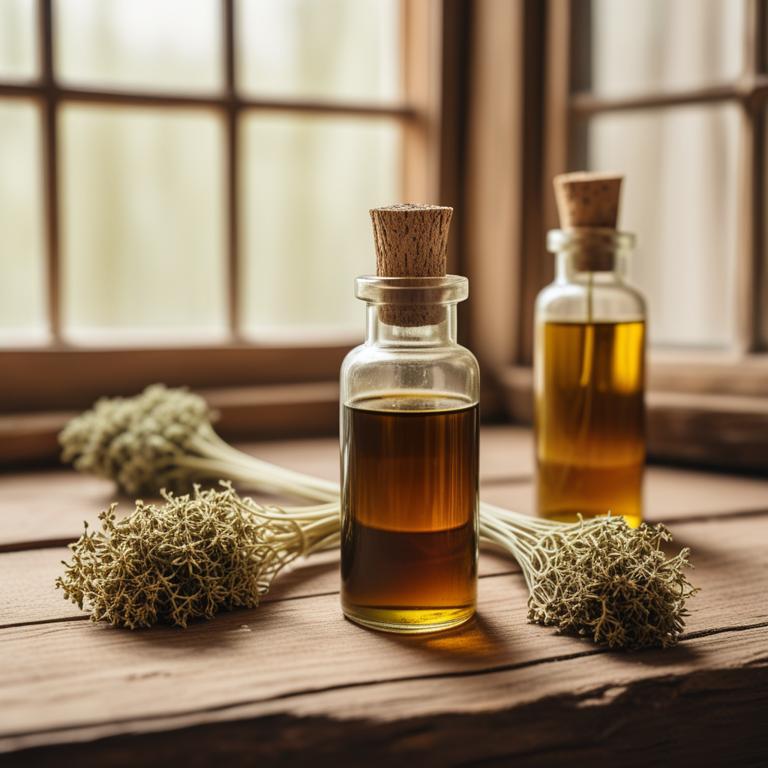
Foeniculum vulgare tinctures contains a compound called furanocoumarin, specifically bergapten, which is known for its anti-inflammatory properties.
It also contains anethole, a phenylpropene that helps relax the muscles in the digestive system, reducing spasms and cramps. The tincture's antispasmodic properties, caused by the presence of furanocoumarins and sesquiterpenes, help to soothe the stomach and alleviate cramp-like pains. Foeniculum vulgare's carminative properties, due to the action of anethole and other volatile oils, help to expel gas from the digestive tract, providing further relief from stomach cramps.
These compounds work together to calm the digestive system, providing relief from stomach cramps and discomfort.
- Gather 250ml of 80% vodka and 100g of fresh or dried Foeniculum vulgare leaves.
- Combine the Foeniculum vulgare leaves with 250ml of vodka in a clean glass jar.
- Steep the mixture in a cool, dark place for 2-3 weeks, shaking the jar daily.
- Strain the mixture through a cheesecloth or a coffee filter into another clean glass jar.
- Label and store the Foeniculum vulgare tincture in a cool, dark place. Use 15-30 drops as needed to relieve stomach cramps.
5. Cinchona officinalis

Cinchona officinalis tinctures contains quinine, a well-known anti-inflammatory agent, and other alkaloids like cinchonine and cinchonidine.
These compounds help reduce inflammation and ease pain in the stomach muscles, making it a useful remedy for stomach cramps. Quinine's ability to relax smooth muscle and reduce spasms also contributes to its effectiveness in alleviating stomach cramps. Additionally, cinchonidine has antispasmodic properties, which help calm the stomach muscles and prevent further cramping.
By reducing inflammation and relaxing the stomach muscles, Cinchona officinalis tinctures provides relief from stomach cramps.
- Gather 1 cup of dried Cinchona officinalis bark and a clean glass jar with a lid.
- Combine the dried Cinchona bark with 2 cups of 80-proof vodka in the glass jar.
- Close the jar and shake it well for 10-15 minutes to mix the ingredients.
- Store the jar in a cool, dark place and let it sit for 2-3 weeks, shaking the jar every day.
- Strain the mixture through a cheesecloth or a coffee filter into another clean glass jar. Discard the solids and bottle the tincture.
6. Valeriana officinalis
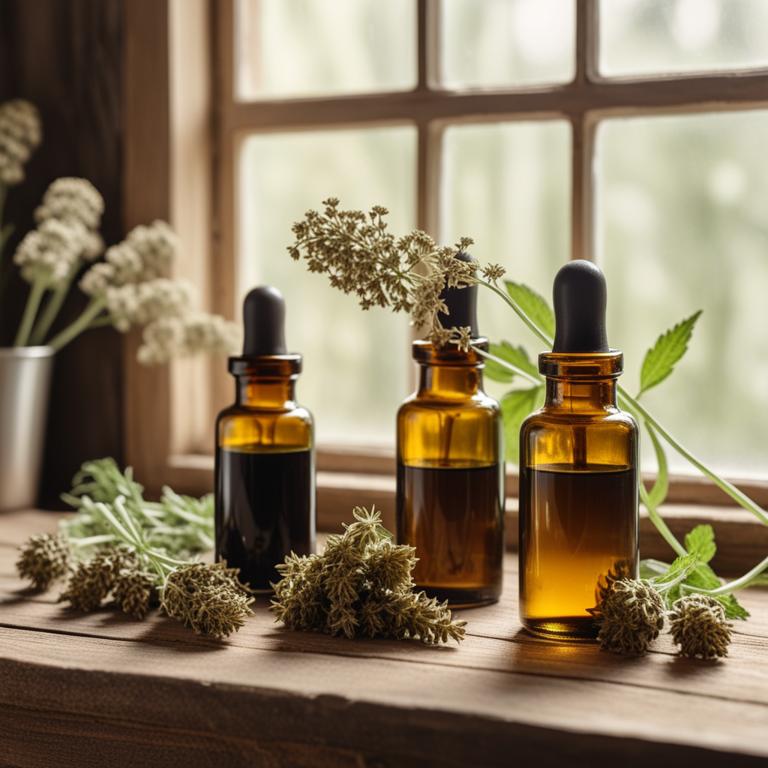
Valeriana officinalis tinctures contains the bioactive constituents valerenic acid, isovaleric acid, and valepotriates.
These compounds have sedative and anti-inflammatory properties that help to relax the stomach muscles and reduce inflammation in the digestive tract. The valepotriates in particular have been shown to have a calming effect on the stomach, which can help to ease cramps and spasms. Additionally, valeriana officinalis has antispasmodic properties, which can help to prevent the stomach muscles from contracting and causing pain.
By relaxing the stomach muscles and reducing inflammation, valeriana officinalis tinctures can provide relief from stomach cramps and other digestive issues.
- Gather 1 cup of fresh or dried Valeriana officinalis roots. Clean and chop them into small pieces.
- Combine the chopped roots with 2 cups of 80-proof vodka in a clean glass jar. The roots should be completely covered by the vodka.
- Seal the jar and store it in a cool, dark place for 2-3 weeks, shaking the jar every day.
- After 2-3 weeks, strain the liquid through a cheesecloth or a coffee filter into another clean glass jar, discarding the solids.
- Store the Valeriana officinalis tincture in a cool, dark place. Use 20-30 drops of the tincture in water as needed to help relieve stomach cramps.
7. Silybum marianum

Silybum marianum tinctures contains silymarin, a complex mixture of flavonoids, lignans, and polyphenols.
Silymarin's flavonoids, especially silybin, have anti-inflammatory properties that help reduce swelling and pain in the stomach. Lignans in silymarin, such as silibinin, have antioxidant properties that protect the stomach lining from damage and promote healing. Silymarin's polyphenols, including silidianin, also have anti-inflammatory effects that soothe the stomach and reduce cramping.
By reducing inflammation and protecting the stomach lining, silymarin in Silybum marianum tinctures helps alleviate stomach cramps.
- Gather 250 grams of dried Silybum marianum flowers and leaves. Use a clean glass jar to store them.
- Combine 1 cup of 80% vodka and 1 cup of 80% glycerin in a clean glass bowl. Stir well.
- Add the dried Silybum marianum to the glass jar. Pour the vodka-glycerin mixture over the herbs, making sure they are completely covered.
- Seal the jar tightly and shake it well for 5-7 days, 2-3 times a day. This helps the mixture steep and blend.
- Strain the liquid through a cheesecloth or a coffee filter into a clean glass bottle. Discard the solids. Store the tincture in a cool, dark place.
FAQ
Can drinking herbal tea prevent stomach cramps from forming?
Drinking herbal tea may help with stomach cramps.
Some teas, like peppermint and ginger, have anti-inflammatory properties that can soothe the stomach and relax the muscles. This can help reduce cramping and discomfort.
The tea can also help ease digestion and calm the digestive system, potentially preventing cramps from forming.
Is it safe to consume herbal teas for stomach cramps every day?
While herbal teas can provide relief from stomach cramps, consuming them daily may not be safe for everyone.
Some herbs, like peppermint and ginger, can cause digestive issues if taken excessively.
It's best to use herbal teas in moderation, and listen to your body's response to avoid potential side effects.
How long does it take for herbal teas to show results in stomach cramps?
Herbal teas can help soothe stomach cramps in a few hours.
Ginger tea, in particular, is known to calm the stomach and reduce discomfort. Chamomile tea can also help relax the muscles and ease cramps.
Drinking a warm cup of herbal tea when you feel a cramp coming on may provide quick relief, but this can vary from person to person.
Related Articles
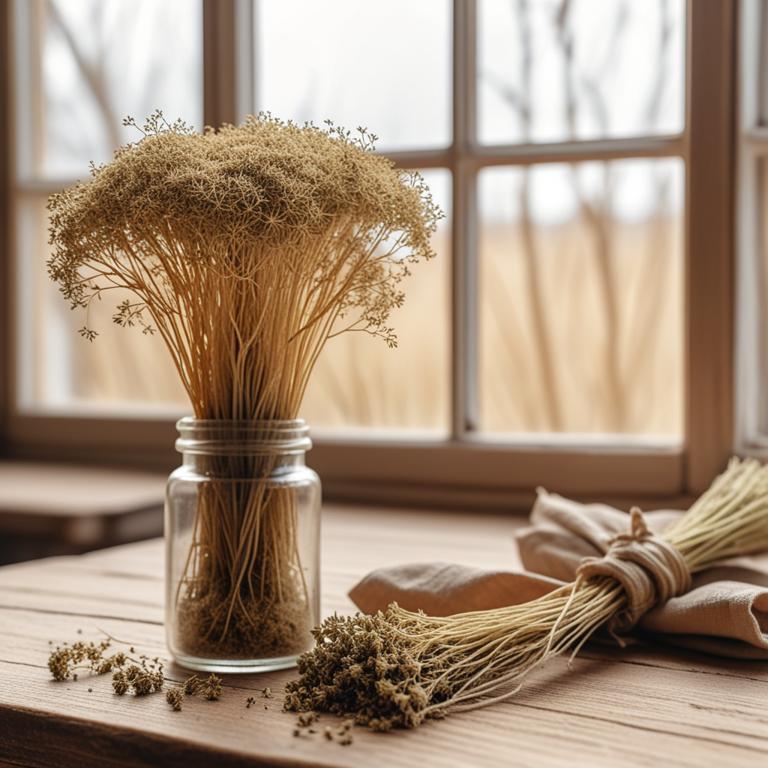
Gas in Stomach Causes, Symptoms, and Natural Herbal Remedies for Relief
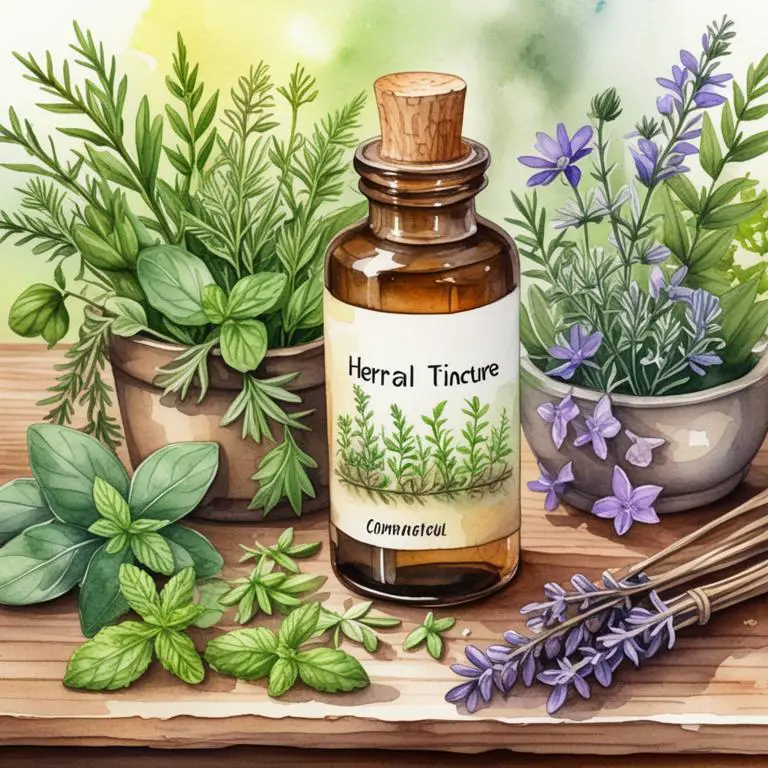
Unlocking the Secrets of Difficulty Eating: Medicinal Herbs and Herbal Preparations for a Balanced Diet
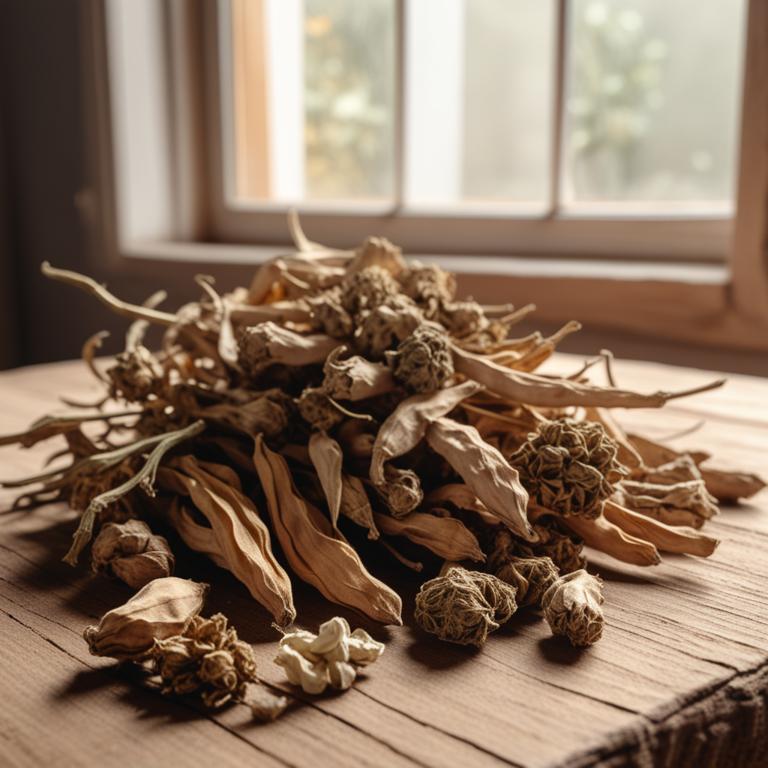
Gerd: Understanding the Causes and Benefits of Herbal Remedies
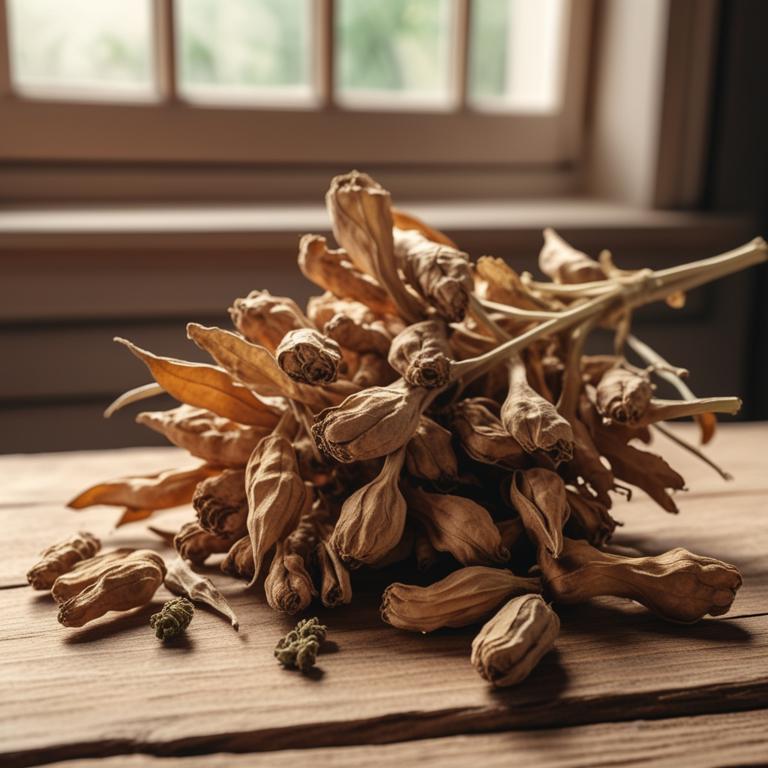
Indigestion Relief with Medicinal Herbs and Herbal Preparations: A Comprehensive Guide
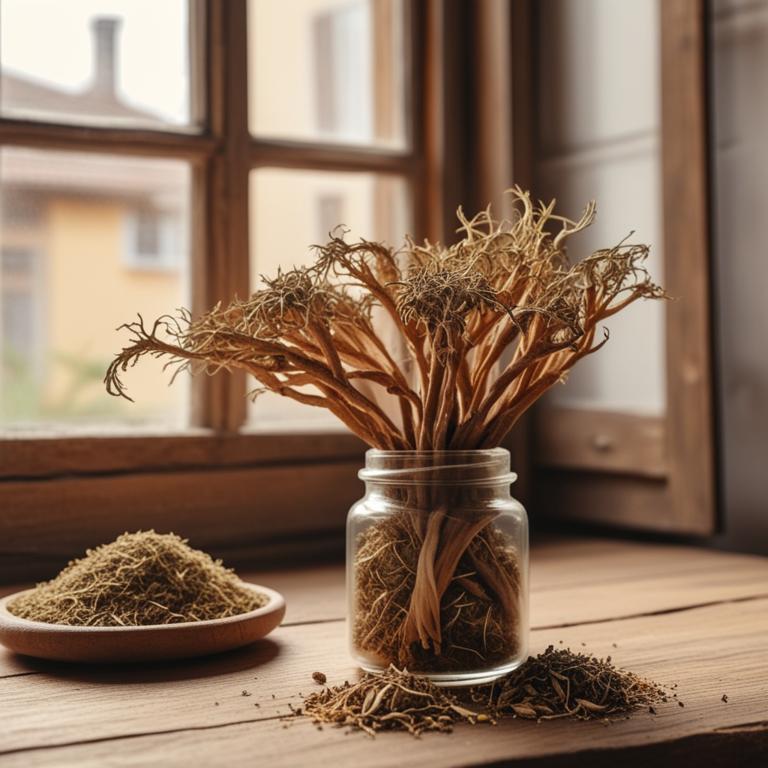
Ulcerative Colitis: Investigating the Role of Medicinal Herbs and Preparations
